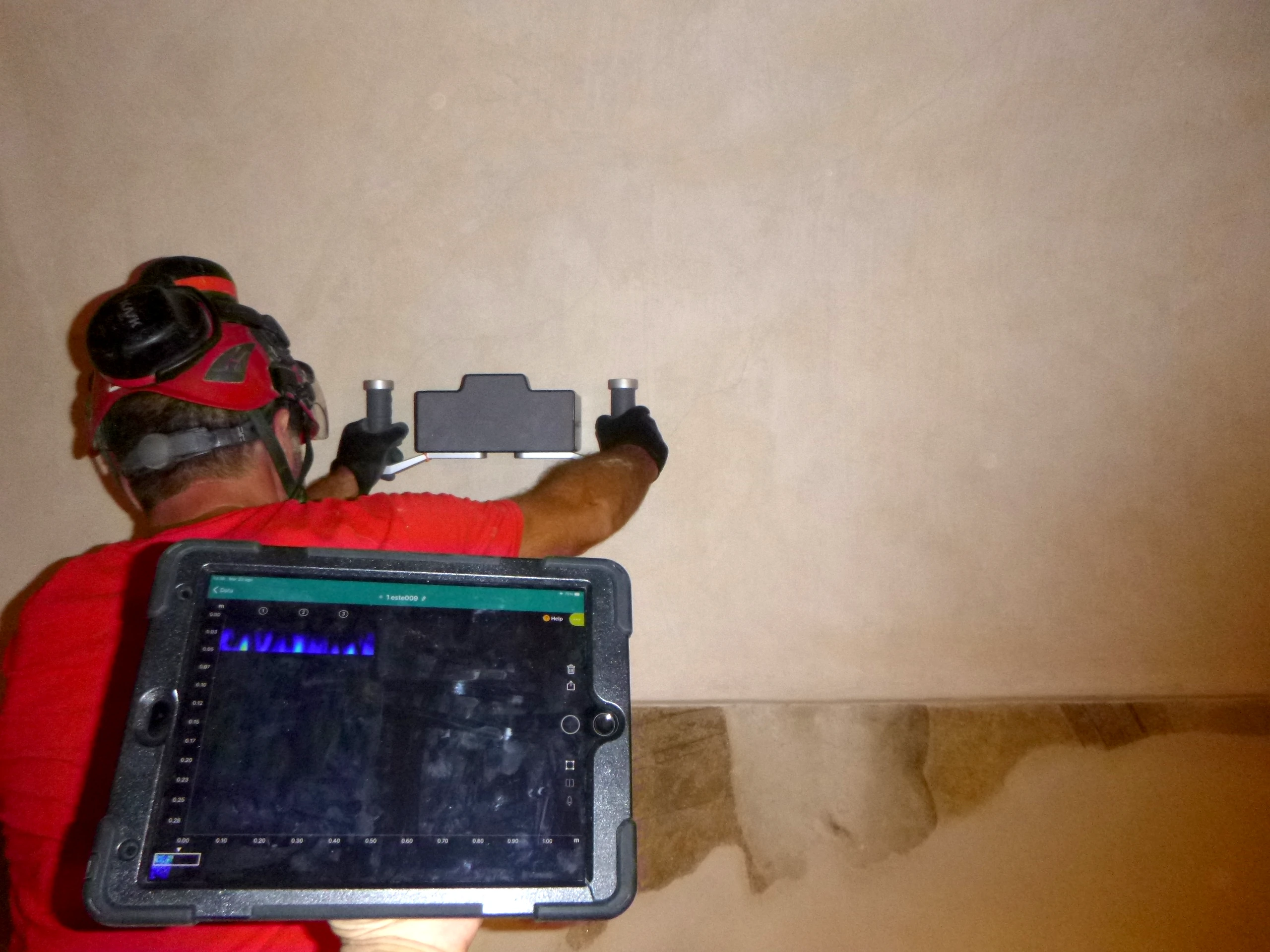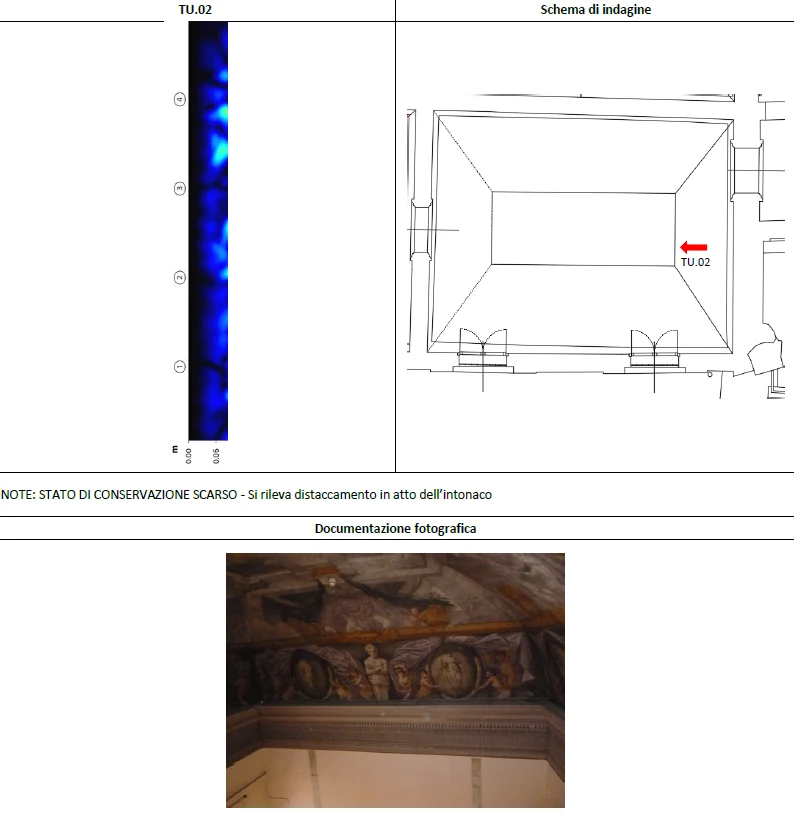

Ultrasonic tomography
The method is based on the reflection of short pulses of ultrasonic elastic waves by cracks, cavities, reinforcements and other discontinuities within the material (pulse-echo method). The intensity of the waves reflected by these inhomogeneities depends on their contrast with respect to the base material in terms of acoustic impedance (acoustic impedance Z = density x velocity of the elastic waves). Air present in cavities has an acoustic impedance close to zero, causing ultrasonic waves to be completely reflected. Weaker signals (R ~ 0.5) are recorded in correspondence with the rebars, whose acoustic impedance is approximately 4-5 times that of the concrete.
By repeatedly applying this principle through a series of equally spaced pulse emitter-receiver sensors, the instrument processes in a few seconds a 2D ultrasonic tomography along a section orthogonal to the surface of the element (B-scan). This technique enables the detection of defects and anomalies even in structures accessible from only one side, such as floors, cladding slabs, and tunnels. Additionally, it allows for thickness measurement, the assessment of masonry morphology (e.g., number of leaves and presence of infill), and the evaluation of the effectiveness of strengthening interventions.
In bridges and infrastructure, ultrasonic tomography is used to locate reinforcement bars and cable ducts, as well as to detect voids, discontinuities, cracks, and material defects. In cultural heritage applications, the technique is particularly useful for identifying defects in stone elements (e.g., gables and columns), such as inherent laminations, natural veining, and cracks parallel to the surface, provided they are deeper than 50 mm.
